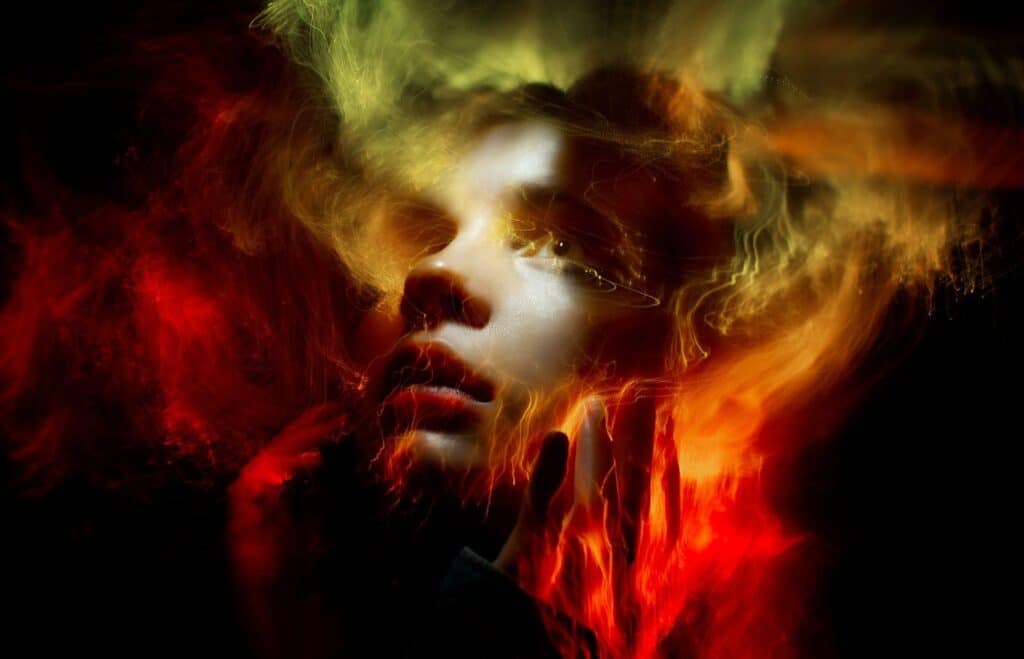The difference between normal anxiety and anxiety disorder

Everyone experiences nervousness, or anxiety under certain circumstances. It might relate to a test situation, a job interview, or a coming life change. In today’s world there is a great deal of pressure to perform well in our professional and personal lives. Indeed, life demands are ever present!
This article will help you understand the difference between “normal” or non-debilitating anxiety and anxiety disorders, such as generalized anxiety, phobias, or panic attacks. You will also find information on treatment options.
Working individuals are exposed to performance reviews and have quotas. Additionally, many adults face pressure to perform in multiple roles, such as meeting the demands of work, marriage, and being a parent. School age children and college students often feel pressure. Standardized tests, GPAs, and trying to fit in with friends put a great deal of stress on students to perform, above and beyond.
Feeling anxious is a normal reaction to stress. It prompts us to prepare for important events, follow through with assignments and duties, and plan our time carefully. In itself, experiencing anxiety is not a negative thing. A touch of anxiety can serve us well. It gives us the ability to able to sense danger, be extra careful about our environment, and engage in the “fight or flight” response if in danger. However, the accumulation of stress, long working hours, lack of sleep, partnership problems can easily overextend individual’s coping abilities, which might end in anxiety disorder or depression.
We must keep in mind that there is a real difference between having anxiety in a situation and an anxiety disorder. When someone has a constantly present intense anxiety (generalized anxiety disorder) and/or excessive anxiety coming in waves (panic attacks) will be present with debilitating symptoms. Many people with anxiety disorder will begin to avoid situations that trigger or worsen their symptoms. This can have damaging effects on a person’s life and emotional health.
Symptoms Anxiety Disorder
- Overwhelming feelings of panic and fear
- Uncontrollable obsessive thoughts
- Painful, intrusive memories
- Recurring nightmares
- Physical symptoms (e.g. feeling sick to your stomach, “butterflies”, heart pounding, startling easily, and muscle tension (“Anxiety Disorders” n.d.)
Major types of anxiety disorders
The American Psychological Association (APA) has created a list of the major types of anxiety disorders and their characteristics:
Generalized Anxiety Disorder (GAD)

setting without good reason
People with Generalized Anxiety Disorder have returning fears or worries. The reason for the generalized anxiety may be difficult to identify. But the fears and worries are very real and often keep individuals from focusing on daily tasks.
Criteria of GAD
Individuals with GAD display excessive or disproportionate feelings of anxiety or worry for at least six months almost daily. They excessively worry about different things, such as finances, work, health, and other possible life uncertainties. Consequently, this worrying causes significant distress in day-to-day functioning, including social life, studies and work.
GAD symptoms include
- feeling agitated, or on-edge,
- fatigue,
- having troubles concentrating,
- mind going blank,
- irritability,
- muscle tension,
- troubled sleep (falling or staying asleep).
Panic Disorder

The picture “The scream” was painted by Edvard Munch in 1893. The picture is the best-known artwork of Munch. The expression of fear has a universal value. The painting is symbolizing the artistic expression of a panic attack. Panic attacks appear suddenly causing intense unprovoked feelings of terror and dread. Panic attacks coming constantly over longer period of time are called panic disorder. People who suffer from the panic disorder develop strong fears about when and where their next panic attack will occur. They often restrict their activities as a result.
Panic attack symptoms usually include
- a pounding heartbeat, heart palpitations, or a faster heart rate
- sweating
- shaking or trembling
- feelings of shortness of breath or choking
- feelings of imminent doom
- feelings of losing control
Phobias

A related disorder involves phobias, or intense fears, about certain objects or situations. Specific phobias may involve things such as fears of certain animals or fears of flying (flying phobia). Social phobia involves fear of social settings or public places.
Obsessive-compulsive disorder (OCD)
OCD is characterized by persistent, uncontrollable, and unwanted feelings or thoughts (obsessions) and routines or rituals (compulsions). Here individuals engage in ritualistic behaviours to try to prevent or rid themselves of the disturbing thoughts.
Examples of common compulsions include washing hands or cleaning house excessively for fear of germs. Once the patient stops the rituals, he will immediately experience anxiety. Hence, the cycle continues.
Post-Traumatic Stress Disorder (PTSD)

Suffering severe emotional trauma, such as from a natural disaster or serious accident or crime, may experience PTSD. Thoughts, feelings and behaviour patterns become seriously affected by reminders of the event. Often months or even years after the traumatic experience.
Symptoms such as extreme fear, shortness of breath, racing heartbeat, insomnia, nausea, trembling and dizziness are common in anxiety disorders. Although they may begin at any time, anxiety disorders often surface in adolescence or early adulthood. There is some evidence that anxiety disorders run in families; genes as well as early learning experiences within families seem to make some people more likely than others to experience these disorders.
Anxiety disorder, effective treatment
Psychotherapy
If you are suffering from excessive anxiety in Dubai, you can rest assured that our team of mental healthcare professionals at CHMC will provide state-of-the art treatment. You can get treatment for anxiety in Dubai from our psychotherapist, counsellor, psychologist, or psychiatrist. Typically, in the case of mild or moderate anxiety working with a qualified counsellor, psychologist, or psychotherapist is sufficient. Available treatment methods are: Cognitive Behavioral Therapy (CBT), Exposure Response Prevention (ERP), Systematic Approximations, and psychodynamic work.
Treatment with medication

When anxiety is severe or extremely severe, it is important to seek the services of a psychiatrist to establish a diagnosis and consider pharmacotherapy (using medication in addition to counselling). A psychiatrist is a mental health professional who is a medical doctor with specialization in mental health disorders. A psychiatrist is uniquely qualified to examine possible physical reasons for anxiety and to prescribe medications that act on the brain, also called psychotropic drugs. It is during the psychiatric evaluation that that a mental health diagnosis, or diagnoses (comorbidity), is established. It is not unusual for people suffering from anxiety to also have depression. Once a clear diagnosis has been established a treatment plan is developed which could include therapy and medication, or just therapy.
Combined treatment
In cases where medication and counselling will best benefit our patients, we make a combined effort between the treating psychiatrist, the counsellor, and the patient during which progress is noted and challenges discussed. This will enhance the therapeutic experience for the patient.

Dr. Annette Schonder
Clinical Counsellor,
Marriage Therapist, Hypnotherapist
(American Board)
Call +971 4 457 4240
